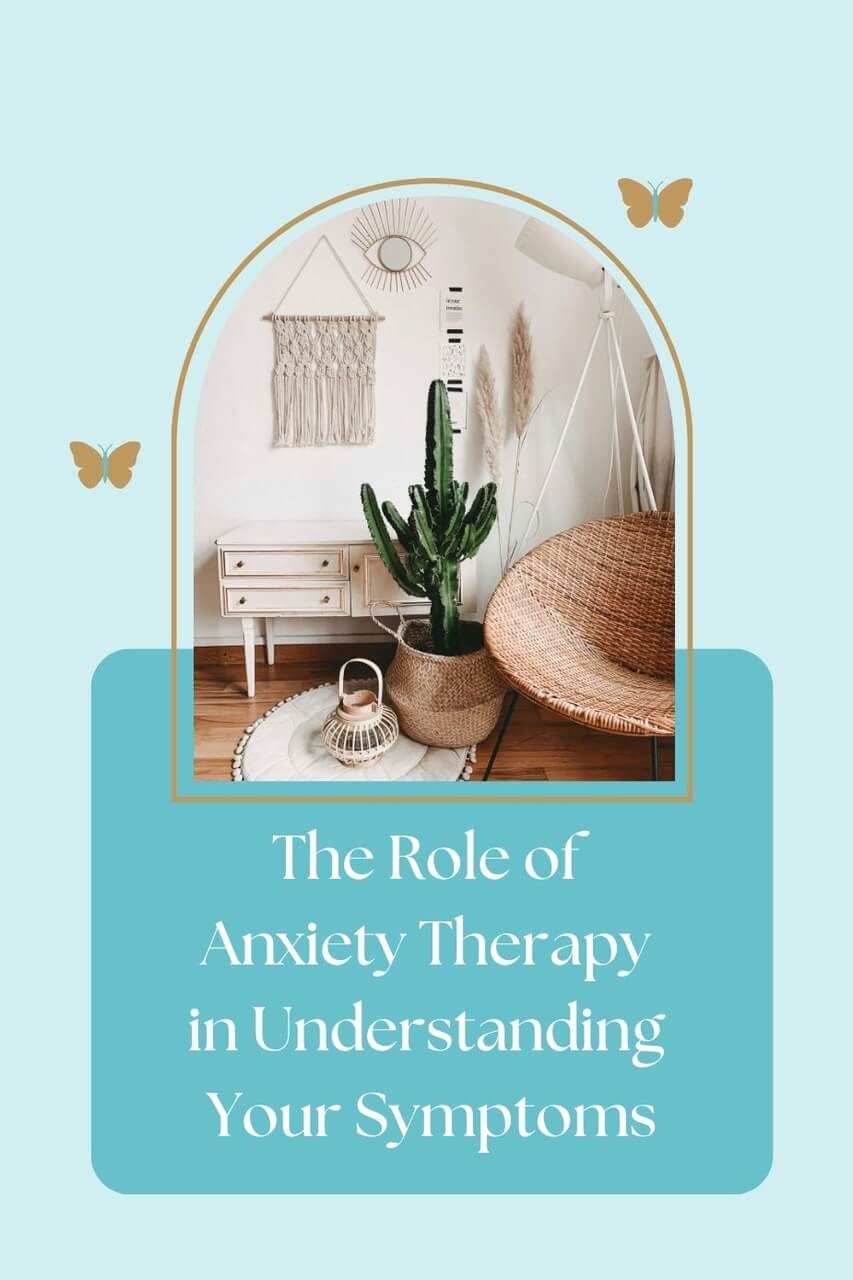Anxiety can affect many areas of life, from work to relationships, and even your physical health. Yet, with the right support, it’s possible to find clarity and peace. Anxiety therapy plays a crucial role in helping you understand where your feelings are coming from and how to manage them. In this post, we’ll walk you through what happens in holistic anxiety therapy, why the therapeutic relationship is so important, and how to choose the right therapist for your needs.
Starting therapy can feel like a big step, but it’s the first toward healing. Holistic anxiety therapy is designed to address both your mental and physical well-being.

What to Expect During Holistic Anxiety Therapy Sessions
Holistic anxiety therapy focuses on the entire person, not just the symptoms. This means looking at all aspects of your life, including emotional, physical, and even spiritual factors, to uncover what might be contributing to your anxiety. It’s not just about talking through your feelings—though that’s a big part of it—it’s about finding ways to address anxiety at its root.
When you begin therapy, the first few sessions will likely involve getting to know your therapist and sharing your story. Your therapist will ask about your life, your experiences, and how anxiety affects you daily. They may also guide you through specific exercises to help you connect more deeply with your body and mind. Such as deep breathing, meditation, or gentle movement. These practices are designed to help calm your nervous system and reduce anxiety in the moment.
Therapy sessions might also include exploring your past, including any trauma or difficult experiences that may still be affecting you today. This could involve looking at significant traumas. Like the loss of a loved one, or smaller, repeated experiences that have added up over time. Understanding these connections can help make sense of why your anxiety is happening now.
Expect sessions to be a space where you are free to express yourself, learn coping strategies, and practice mindfulness. The tools you gain during therapy can help you manage symptoms outside of the therapy room—whether that’s in a stressful work environment or when navigating personal relationships. As you work through these practices, you’ll gradually build resilience and feel more in control of your anxiety.
A Safe, Non-Judgmental Space
When you first meet with your therapist, the most important thing is creating a space where you feel safe. You might be nervous, but therapy is a place where your emotions and experiences will be heard without judgment. Your therapist will begin by asking about your symptoms, your daily life, and what you hope to get out of therapy. You won’t be rushed to share everything at once. Therapy works at a pace that feels comfortable to you.
Understanding Your Anxiety Symptoms
One of the primary roles of anxiety therapy is to help you understand your symptoms better. Anxiety can manifest in many ways, and everyone experiences it differently. Here are some aspects to consider when exploring your symptoms in therapy:
Your therapist will guide you in identifying these symptoms and exploring their triggers. By understanding how and when your anxiety appears, you can begin to see patterns and develop strategies to address them.
Recognizing Symptoms
Anxiety can show up as various physical, emotional, and mental symptoms. Common physical symptoms include:
- Tension: You may feel tightness in your muscles, particularly in your neck, shoulders, or back.
- Rapid Heartbeat: A racing heart can be a clear sign of anxiety, especially in stressful situations.
- Shortness of Breath: You might find it hard to breathe or feel like you’re gasping for air.
- Gastrointestinal Issues: Anxiety can lead to stomach aches, nausea, or changes in appetite.
On the emotional and mental side, you might experience:
- Overwhelming Worry: Persistent thoughts about potential problems can feel consuming.
- Restlessness: You may feel like you can’t sit still or relax.
- Irritability: Little things that wouldn’t normally bother you may trigger frustration or anger.
- Difficulty Concentrating: It may become hard to focus on tasks or conversations when anxiety takes over.
Identifying Triggers
Your therapist will help you explore what situations, thoughts, or feelings trigger these symptoms. For example, social situations, work deadlines, or past experiences can provoke anxiety. Identifying these triggers is a vital step in managing anxiety effectively. By recognizing what causes your symptoms, you can learn to anticipate and prepare for these situations. Working in tandem with your therapist will be a vital part of your healing.

The Importance of a Therapeutic Relationship in Understanding Anxiety
The relationship you develop with your therapist is one of the most important aspects of therapy. A strong, trusting connection allows you to feel safe enough to open up about difficult emotions and experiences. This is especially important when dealing with anxiety because it’s often rooted in fear, worry, or avoidance of certain thoughts and feelings.
Anxiety can make it hard to trust yourself or others, which is why building a supportive relationship with your therapist is key. A holistic therapist will work to create a space where you feel truly heard and understood. They will listen to your concerns without judgment and offer empathy as you navigate your feelings. When you know that someone is there for you, it becomes easier to explore your anxiety more deeply.
In holistic anxiety therapy, the relationship with your therapist isn’t just about discussing symptoms—it’s about working together to uncover the underlying issues that contribute to your anxiety. For example, you might discover patterns in your thinking or behavior that you weren’t aware of, such as perfectionism or people-pleasing tendencies. With the right support, you can start to break these patterns and develop healthier ways of coping.
A strong therapeutic relationship also encourages self-compassion. Your therapist helps you become more gentle with yourself. Reminding you that it’s okay to struggle and that healing is a process. This kindness toward yourself can reduce anxiety and help you build resilience in the face of life’s challenges.
How to Choose and What to Look for in a Holistic Anxiety Therapist
Finding the right anxiety therapist is a deeply personal decision. It’s important to choose someone who understands your needs and whose approach aligns with what you’re looking for. Here are some key factors to keep in mind when selecting a holistic anxiety therapist:
- Holistic Approach: Look for a therapist who integrates multiple healing methods. Holistic anxiety therapy practices might include mindfulness practices, breathwork, body-based (somatic) techniques, and traditional talk therapy. The goal is to treat anxiety from all angles—mental, physical, and emotional. A therapist who understands the balance between these aspects can help you achieve deeper healing.
- Experience with Anxiety: Choose a therapist with specific experience in treating anxiety. Ask about their background, how long they’ve been working with clients who have anxiety, and what techniques they use. This gives you insight into how well-versed they are in addressing the unique challenges that come with anxiety disorders.
- Comfort and Trust: The most important part of therapy is how you feel with your therapist. During your first meeting, ask yourself: Do I feel comfortable with this person? Do I feel heard and respected? Building a trusting relationship is key to successful therapy, so make sure you feel a connection early on.
- Flexibility and Support: A good therapist will adapt their approach to meet your changing needs. Anxiety can be unpredictable, so it’s important that your therapist is flexible in how they support you. Ask how they tailor sessions to fit different clients and whether they offer additional resources, like tools for self-care between sessions.
Remember that it’s okay to take time to find the right therapist. You might need to meet with a few different people before you find someone who feels like the right fit. Trust your instincts and choose a therapist who makes you feel supported and empowered.
Could Marilyn Ashley, LMFT, Be the Right Therapist for You?
If you’re searching for a therapist who truly understands anxiety from a holistic perspective, consider reaching out to Marilyn Ashley, LMFT. With years of experience and a compassionate approach, Marilyn specializes in helping individuals manage anxiety by treating the whole self—body, mind, and spirit. Using tools like mindfulness, breathwork, and somatic techniques, Marilyn works alongside clients to guide them toward healing and balance.
Whether you’re dealing with chronic stress, panic attacks, or general anxiety, Marilyn is dedicated to helping you uncover the root causes of your symptoms and build practical strategies for managing them. She creates a warm, supportive environment where clients feel safe to explore their emotions and experiences.
If you’re feeling ready to take the next step in your healing journey, Marilyn is here to offer support. Anxiety doesn’t have to control your life, and with the right therapist, you can find relief and regain a sense of calm. You deserve the opportunity to heal, and there’s no better time to start than now.
When you’re ready to learn more about how holistic anxiety therapy can help you better understand and manage your symptoms, reach out to Marilyn Ashley, LMFT, for the support you need. A more balanced and peaceful life is within reach.

Have a Better Understanding of Your Anxiety Symptoms With The Help of Holistic Anxiety Therapy in Manhattan Beach, CA
Are you feeling overwhelmed by anxiety and looking for a more holistic approach to healing? At our practice, we combine mind-body techniques in holistic anxiety therapy to help you uncover the root causes of your anxiety and create lasting, positive change. Reach out to our compassionate anxiety therapists at Marilyn Ashley, LMFT to start your journey toward calm, balance, and inner peace. Follow these three simple steps to get started:
- Schedule Your 20-Minute Complimentary Phone Consultation
- Learn More About Me and My Services
- Begin understanding your anxiety and start healing!
Additional Services Offered By Marilyn Ashley, LMFT
At my Hermosa Beach, CA practice, holistic Anxiety Therapy is just one of the services I offer to help you find balance and begin healing from your anxiety symptoms. In addition to helping you balance life with anxiety, I specialize in Life Transitions, Trauma, and Couples Therapy. At my Hermosa Beach, CA Practice, I work with adult clients from Manhattan Beach, Redondo, Beach El Segundo, and the rest of the South Bay area, and we work toward embracing your anxiety and using it as a tool for growth and transformation. I also offer online therapy sessions for those located anywhere else in California. By incorporating holistic practices into your daily life, you can support your overall well-being. I’m excited to work with you on your journey towards healing and growth. Together, let’s embrace your anxiety and learn how to thrive, not just survive! Check out my blog for more about holistic healing!

Hi there!! I’m Marilyn. I empower individuals to embrace their true selves, heal holistically and flourish. I provide in-person therapy in Hermosa Beach, California and the greater South Bay area as well as online therapy throughout California, Colorado, Florida, Kansas and South Carolina. Click here to get started.

